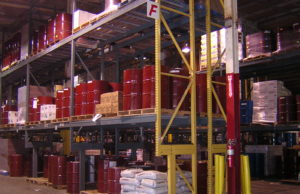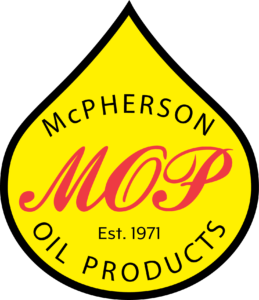Storage and Handling Basics – Location
07 Aug 2020, Posted by in Oil Tips Lubricating oils and greases require proper storage and handling to avoid deterioration, contamination, and even costly waste disposal. From damaged containers to excessive heat or cold exposure, many factors that can cause deterioration and waste can easily be avoided by following a few best practices. See how you can improve your storage and handling procedures to reduce waste and ensure the integrity of stored lubricants. We’ve looked at containers. Now let’s discuss location.
Lubricating oils and greases require proper storage and handling to avoid deterioration, contamination, and even costly waste disposal. From damaged containers to excessive heat or cold exposure, many factors that can cause deterioration and waste can easily be avoided by following a few best practices. See how you can improve your storage and handling procedures to reduce waste and ensure the integrity of stored lubricants. We’ve looked at containers. Now let’s discuss location.
Indoor Storage
The best place to store lubricants is indoors and in one designated area. Lubricants stored in various locations throughout the plant can become a control issue by making accounting and inventory management difficult. Racks and shelving that adequately protect all containers should be provided along with a device to hoist the drums. Do not store lubricants near steam lines or heaters. Each type of lubricant should be easy to reach.
Older stocks should be rotated to the front to prevent from going beyond shelf life or expiration dates. A first-in, first-out rule will eliminate the risks of deterioration caused by lengthy storage.
Outdoor Storage
Storing lubricants outdoors is often considered poor practice. However, due to space issues, it may be the only option. If lubricants must be stored outdoors, however, take certain precautions to minimize harmful effects.
A temporary shelter, lean-to, or waterproof tarpaulin will protect the drums from rain and snow. Place the drums on blocks or racks several inches above the ground to prevent moisture damage. They should be placed on their sides with bungs (portholes) horizontal to each other. In this position, the underside of the bungs is submerged by the drum contents thus preventing the drum from breathing in moisture. For maximum protection, the drums can be placed on end (bung end down) on a well-drained surface. A drum that has a bung on the side should be stored on the end or on its side, with the bung down.
If the drums are stored on end with bungs on top, water may seep into the drums through the bungs and contaminate or destroy the contents or form rust on the inside of the drum. Rain or condensed atmospheric moisture that collects inside the chime can be drawn down through the bung as the drum breathes with the rise and fall of ambient temperature and pressure. This can occur even if the drums have never been opened. Drums that must be stored outdoors with the bung end up should be tilted on blocks with the bungs parallel to the block to keep water away from the bung openings.
Bulk storage
Bulk quantities of oil and grease are delivered to the plant in tank trucks or railroad tank cars and are pumped into storage tanks or bins. Unloading bulk lubricants can be hazardous, so only trained employees should be assigned to this task.
Bulk lubricants should not be stored outdoors because of the risk of contamination by water as the vents and filler openings at the top of the storage tanks breathe. Temperature extremes and changes will have some adverse effect on bulk lubricants as on those in drums.
If outdoor storage is necessary, all openings on the bulk `tanks should be checked for tightness and properly secured. A tarpaulin or roof placed over the tanks will protect them from rain and snow.
Storage tanks and bins in a warehouse or oil house should not be placed near heaters, steam lines, or any other plant equipment that generates high temperatures. Tanks and bins should not be stored in cold areas either, or where temperatures cycle from hot to cold extremes.
Do not use galvanized tanks or piping to store lubricants that contain additives that may react with zinc to form a soap-like sludge in the lubricant.
Under some inside conditions, moisture may condense inside oil tanks. Moisture intake can be minimized with the use of desiccant breathers and condensate can be removed through the bottom drain, or pumped out with bottom-fed pumps. In bins containing grease, the condensate will collect on top and can be siphoned off. In either case, it is important to remove the water promptly to prevent rust from forming inside the bin and contaminating the oil or grease.
If you need help designing a storage and handling plan for your lubricants, please contact us. Our team of industry experts has over 30 years of experience in storage and handling practices. We are here to help you.
